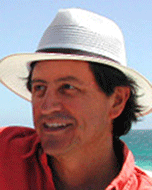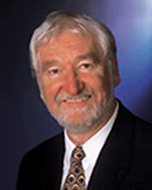Temperature-dependent stability of deep wells in the Cooper Basin*
Fermin Fernàndez-Ibàñez A , David Castillo B , Doone Wyborn C and Dean Hindle DA GeoMechanics International 5373 West Alabama, Houston, TX, 77056. Email: ffibanez@geomi.com
B GeoMechanics International 5373 West Alabama, Houston, TX, 77056. Email: dcastillo@geomi.com
C Geodynamics Ltd., 23A Graham St., Milton, QLD 4064, Australia. Email: Doone.Wyborn@geodynamics.com.au
D Geodynamics Ltd., 9-11 Preston St, Como, WA 6152, Australia. Email: Dean.Hindle@geodynamics.com.au
The APPEA Journal 50(2) 734-734 https://doi.org/10.1071/AJ09098
Published: 2010
Abstract
The Cooper-Eromanga Basin is characterised by high heat flow that has been related to the presence of high radiogenic heat-producing granites. Several wells have been drilled in the area to exploit the heat from the fractured granitic rocks of the basement. Drilling through the hot formations in the Cooper Basin (max. temperature ca. 250 °C) with relatively cool drilling fluids induces an almost instantaneous cooling of the wellbore wallrock. Cooling of the hole (the usual case) increases the tensile stresses (and decreases the compressive stresses) at the wellbore wall. The magnitude of the thermal stresses is also dependent on the silica content of the formation.
Modelling of the in situ stress tensor and mechanical properties of the wellbore rocks has revealed the time-dependent effect that the borehole collapse pressure has on the stability of the wells. Narrow breakouts form at the time of drilling. Afterwards, the temperature difference (ΔT) decays with time, and as the hole warms up compressive stresses increase and breakouts become enhanced. Therefore, if a high ΔT and a short well exposure time are achieved, it would be possible to inhibit breakout development, drill with a lower mud weight (eventually underbalanced), and, thus, minimise the risk of formation damage.
Keywords: drilling, hot dry rocks, thermal stresses, wellbore stability

Fermin received his PhD in earth sciences from the University of Granada (Spain) in 2007. He has previous experience as structural geologist doing field work for mining companies. Since joining GMI in September 2007 he has been involved in consulting in the Asia-Pacific region. Fermin has experience in constructing geomechanical models for wellbore stability, fracture permeability and fault stability analysis in the context of the present-day stress field. He has successfully implemented these processes in the fields of reservoir development and characterisation, wellbore stability and drilling strategies. |

David received his PhD in geophysics from Stanford University in 1993. David has worked with: Amoco International; USGS; Lawrence Livermore National Laboratory; and, University of Adelaide. David is GMI’s most senior consultant responsible for identifying industry trends and clients’ needs related to all aspects of geomechanics and he helps drive the direction of applied research and development to expand the breadth and depth of geomechanics. David has extensive experience in geomechanical measurements and modelling with applications to: field development; field review; reservoir characterisation; natural fracture characterisation; fault stability and fault leakage; EOR; completion strategies for maximising production efficiency; wellbore stability; managed pressure drilling; and, CO2 sequestration feasibility. |

Dr Doone Wyborn is an internationally-known geoscientist specialising in granitic rocks. He obtained his PhD on granite research in 1983, and served more than 25 years with the Bureau of Mineral Resources, Geology and Geophysics and the Australian Geological Survey Organisation, including research in Antarctica and other overseas locations. Doone has been championing the potential of HFR geothermal energy for the last 13 years and is recognised as a leading Australian expert authority on this subject. He is a member of the Executive Committee of the International Energy Agency Geothermal Implementing Agreement and has studied HFR geothermal projects in Japan, Europe and the USA. He was Project Manager of a joint Pacific Power and ANU deep drilling geothermal research project in the Hunter Valley, NSW, with partial funding from the Australian Greenhouse Office. |

Dean Hindle worked as a mineral exploration driller before studying mechanical engineering at Curtin University, Western Australia. He joined Woodside Offshore Petroleum in 1990 as a junior drilling engineer, involved in exploration drilling, before progressing to drilling operations engineer for the North Rankin and Goodwyn A platforms on the North West Shelf of Australia. Wells from these platforms were world class extended reach and horizontal. In 1998 he was seconded to Norske Shell in Norway, involved with abandoning wells from the Ekofisk field, subsea development within the Draugen field and finally as superintendent for a remote single string venture, drilling deep HT wells offshore Namibia. He returned to Woodside in 2002 as Drilling Superintendent and supervised two drilling campaigns—one on the NW shelf, the other in the Bonaparte Basin, where the feasibility of drilling in 27 m of water from a semi-submersible was done and successfully executed. In 2003, he left Woodside to work with INPEX on HPHT wells within the Browse Basin, Western Australia. He has held a number of roles from superintendent to well engineering manager. In 2007, the lure of green energy enticed Dean to the world of geothermal drilling with leading Australian EGS operator, Geodynamics Ltd, as the Well Engineering Technology Manager to develop solutions allowing the drilling, completion and stimulation of deep geothermal wells in central Australia. |
References
Brudy, M., Zoback, M.D., Fuchs, K., Rummel, F., and Baumgartner, J. (1997). Estimation of the complete stress tensor to 8 km depth in the KRB scientific drill holes: implications for crustal strength. Journal of Geophysical Research 102, 18453–75.Kirsch, G. (1898). Die Theorie der Elastizitat und die Bedurfnisse der Festigkeitslehre. Zeitschrift des Verlines Deutscher Ingenieure 42, 707.
Nelson, E., Hillis, R., Sandiford, M., Reynolds, S., and Mildren, S. (2006). Present-day state-of-stress of southeast Australia. APPEA Journal 46, 283–305.
Stephens, G., and Voight, B (1982). Hydraulic fracturing theory for conditions of thermal stress. International Journal of Rock Mechanics and Mining Science 19, 279–84.
Zoback, M.D., 2007—Reservoir Geomechanics. Cambridge: Cambridge University Press.


